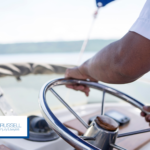Teaching your kids to swim & understanding how to be safe around pools or open water is a responsibility every parent takes on. Knowing your toddler or child(ren) can swim can be comforting for parents, but it shouldn’t be your only strategy for keeping them safe.
You teach them to stop & look both ways before crossing the street, not to run out on to the road, to look for cars & where to safely cross the street, yet you wouldn’t leave your toddler or young child unattended playing by the road.
The same goes for pools, open water & even bathtubs. Drownings can occur in as little as 1.5 inches (4 cm) of water.
Supervision
A parent or guardian should always be present when toddlers & or young children are near water. They should always know where their child(ren) are & what potential hazards are nearby.
Creating barriers between the child(ren) & the water reduces the ability & likelihood that the child can reach the hazard. Fencing around a pool is a common method used to keep the area inaccessible. Self-latching or locking gates that are also self-closing add additional safety measures. Any gates or barriers should be regularly inspected to ensure they’re functioning properly.
Having established pool rules can help instill the need for safety around the water.
The most common & well-known pool rule of them all is no running around the pool. A slip & fall is more likely to occur on wet surfaces & can result in serious injury.
Cleaning up the pool deck so it’s free from water toys or other pool accessories can minimize a child’s temptation to play in that area. It can also reduce the potential for someone to trip over the objects & fall into the water headfirst.
No adult, no entry. Teach them that entering the pool, lake, pond etc. can only be done once a parent has done so. This will enforce to toddlers & younger children that they shouldn’t be going in the water by themselves & that an adult needs to be with them to be in the water.
Follow through. If you say you’re going to go swimming, make sure you keep that promise. By following through with this promise, the child(ren) won’t feel as strong of a need to go near the water when you aren’t around.
Open Water VS Swimming Pool
Swimming at the cottage or in another open body of water is not the same as swimming in a pool at home or recreation centre. A swimming pool is a contained space where the elements can be controlled. Open water brings new hazards that swimmers are faced with. Strong currents, colder water temperatures, greater distances to land or shore, undertows, & even other watercrafts to name a few.
If you or a child has become caught in a river current or fast moving water, the Canadian Red Cross suggests rolling on your back & pointing your feet downstream. This is to avoid hitting any obstacles headfirst. When out of the strongest part of the current, swim straight towards the shore.
Lifejackets & Personal Flotation Devices (PFD)
Drowning accidents can be preventable. When worn properly, a Canadian approved standard lifejacket is designed to turn an unconscious person from their front, over to their back so their face up in the water, allowing them to breathe.
When buying a lifejacket for a child there are certain things you want to look for:
- Canadian approval label containing the chest size or weight it is intended for
- Large collars will help support a child’s head & give additional protection
- A strap on the collar to grab on to
- A secure strap that fastens between the child’s legs, so the device doesn’t slip off
- Bright colours are more noticeable in the water; red, yellow & orange are preferred options
Having a lifejacket or PFD close by, even within reach, isn’t close enough. The need for adult supervision is always required around water & lifejackets or PFDs aren’t a replacement.
If you or someone you know has been involved in an accident your road to recovery is important to us. Fast dial #1000 free from your cell and our experienced team at Dye and Russell will get you the support you need.







